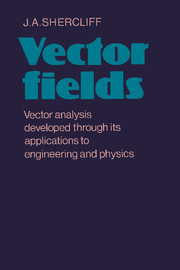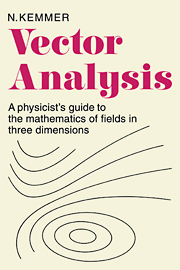Vector Fields
A field is a distribution in space of physical quantities of obvious significance, such as pressure, velocity, or electromagnetic influence. This 1977 book was written for any reader who would not be content with a purely mathematical approach to the handling of fields. In letting the mathematical concepts invent themselves out of the need to describe the physical world quantitatively, Professor Shercliff shows how the same mathematical ideas may be used in a wide range of apparently different contexts including electromagnetism, fluid dynamics, nuclear reactor criticality, plasma oscillations and rotational flow. Mathematical methods are explored only far enough to give the interested reader a glimpse of activities that lie beyond, yet the unifying approach to increasingly powerful, generalised ideas at a level not reached in many books on vector analysis at the time. Special features of the book are a wealth of examples of physical interest, and a thorough appendix.
Product details
April 1977Paperback
9780521290920
342 pages
229 × 152 × 19 mm
0.5kg
Available
Table of Contents
- Preface
- 1. Vector algebra revisited
- 2. Vector algebra applied to electromagnetism
- 3. Line and surface integrals
- 4. Further applications to electromagnetism
- 5. Volume integrals
- 6. A crisis in electromagnetic theory
- 7. Gradient and divergence, gauges of non-uniformity
- 8. Gradient and divergence combined
- 9. Four other important partial differential equations
- 10. Rotationality and the curl operator in fluid mechanics
- 11. The curl operator in electromagnetism
- 12. Integrals in fluid mechanics
- Appendices
- Answers to problems
- Index.








